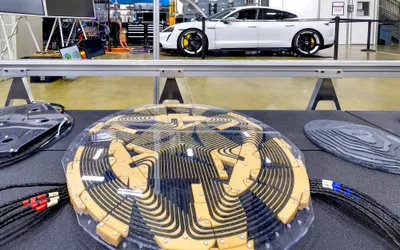In a world where convenience and efficiency reign supreme, wireless EV charging is emerging as a game-changer for urban infrastructure. Imagine a city where electric vehicles (EVs) seamlessly recharge while parked at traffic lights or in designated zones, eliminating the need for cumbersome cables. According to a recent report by Bloomberg Green, the global wireless EV charging market is projected to reach $234 million by 2027, highlighting its growing adoption. In this article, we’ll explore how wireless EV charging is transforming urban landscapes, enhancing convenience, and propelling us into a sustainable future.
The Rise of Wireless EV Charging Technology
How Does Wireless EV Charging Work?
Wireless EV charging, also known as inductive charging, employs electromagnetic fields to transfer energy between two coils—one installed in the ground and the other in the vehicle. This technology, akin to wireless phone chargers, allows for automatic charging without physical connectors.
- Key Components:
- Ground Pad: Installed in parking spaces or roadways
- Vehicle Receiver: Integrated into the EV’s underbody
- Efficiency: Current systems boast up to 93% charging efficiency, a figure that’s steadily improving.
Benefits Over Traditional Charging
Wireless charging offers several advantages over conventional plug-in models:
- Convenience: Just park and charge—no need to handle cables.
- Safety: Reduces risk of tripping hazards and exposure to electrical components.
- Durability: Minimizes wear and tear on charging ports and cables.
Transforming Urban Infrastructure
Integration with Smart Cities
Urban planners are increasingly viewing wireless charging as a pivotal component of smart city ecosystems. As highlighted by TechCrunch, cities like Oslo and Nottingham are pioneering this integration by deploying wireless charging pads in public parking spaces and taxi ranks.
- Traffic Signal Charging: Prototype installations in cities such as Tel Aviv enable EVs to charge at red lights, optimizing downtime.
- Public Transport: Wireless charging pads for buses and trams are being tested in cities like Berlin, reducing operational downtime and enhancing route efficiency.
Scaling the Technology
To facilitate widespread adoption, collaboration between municipalities, technology providers, and automakers is crucial. Companies like Volkswagen and Hyundai are actively investing in wireless charging technology, aiming to incorporate it into their future EV models.
- Key Partnerships:
- WiTricity and BMW: Developing standardized systems to ensure compatibility across brands.
- ElectReon: Partnering with governments to install dynamic charging roads, where vehicles charge while driving.
Practical Considerations for EV Owners
How to Use Wireless Charging
For EV owners, adopting wireless charging involves a few simple steps:
- Check Compatibility: Ensure your EV model supports wireless charging. Brands like Nissan and Ford are rolling out compatible models.
- Locate Charging Spots: Use apps to find available wireless charging stations in your area.
- Park Over the Pad: Align your vehicle so the receiver is directly above the ground pad to initiate charging.
Where to Buy and What to Compare
- Aftermarket Solutions: Companies like Plugless offer retrofit kits for select EV models, allowing current owners to upgrade.
- Comparison Factors:
- Efficiency Ratings: Look for systems with high energy transfer efficiency.
- Installation Costs: Consider long-term savings on maintenance and increased convenience.
The Future of Wireless Charging
As the International Energy Agency predicts, the number of EVs on the road is set to exceed 145 million by 2030. To accommodate this growth, the evolution of charging infrastructure is paramount. Wireless technology is not just a luxury but a necessity for sustainable urban development.
- Innovation Trends:
- Vehicle-to-Grid (V2G) Integration: Wireless systems may soon enable bidirectional energy flow, allowing EVs to return energy to the grid.
- Increased Range: Future advancements could extend the operational range of dynamic charging roads, further reducing range anxiety.
Conclusion
Wireless EV charging is undeniably revolutionizing urban infrastructure, offering a glimpse into a future where sustainability and convenience intersect. As cities continue to embrace this technology, the benefits for both consumers and the environment will expand exponentially. Are you ready to embrace this wave of innovation? Share your thoughts and experiences with wireless charging in the comments below. As we look to the future, it’s clear that wireless charging will play a crucial role in shaping smarter, greener cities worldwide.

